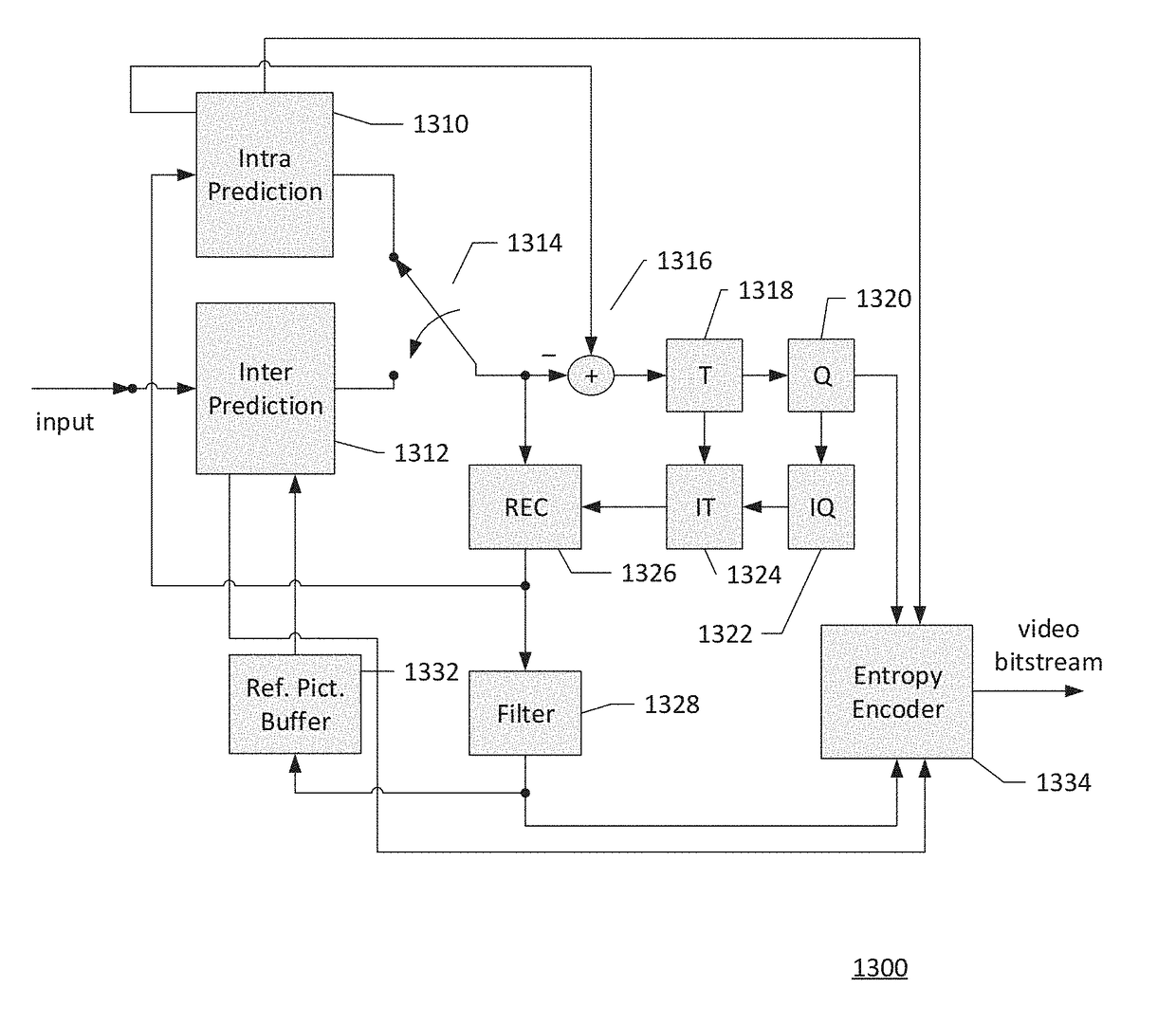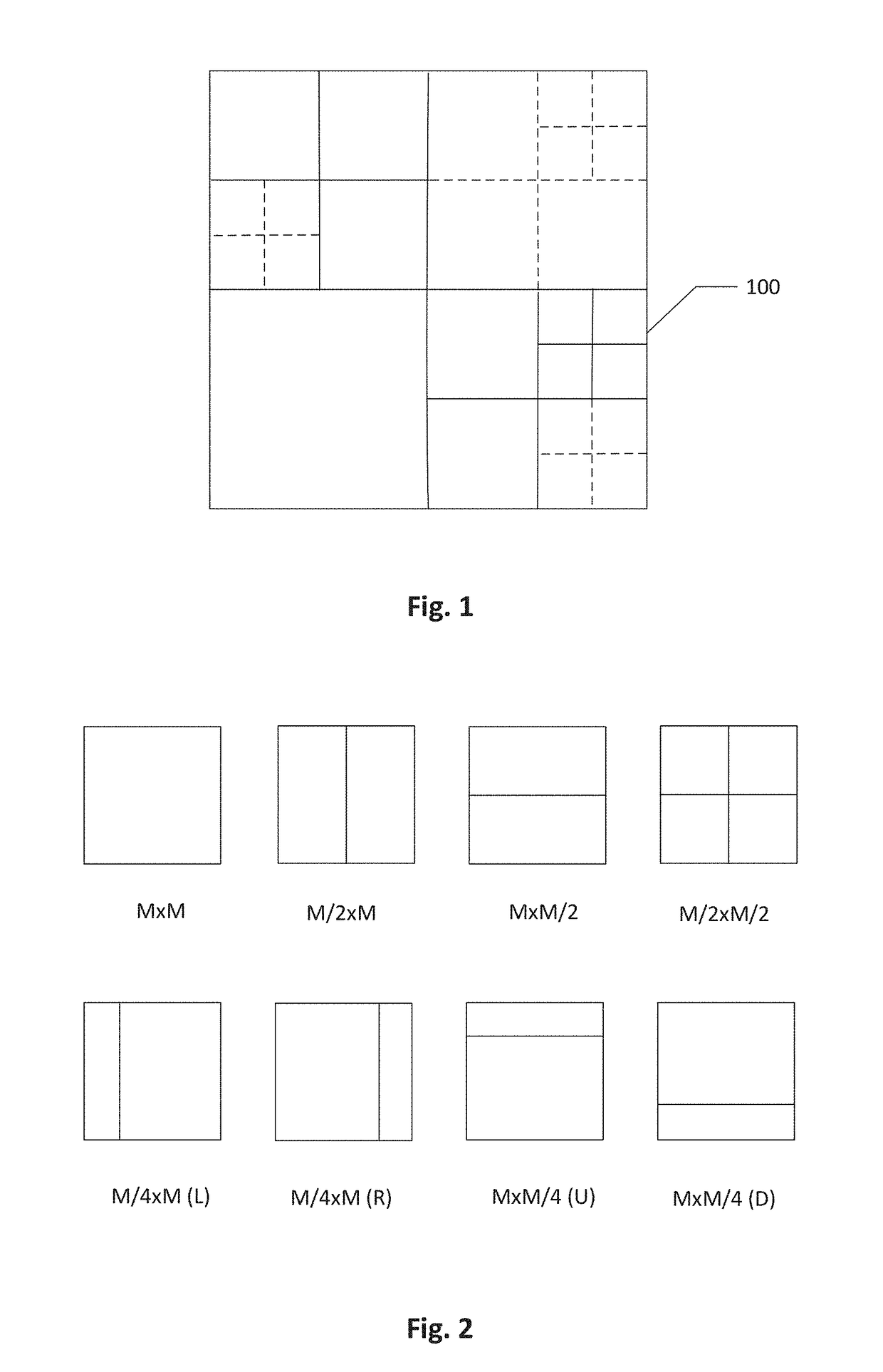Methods and Apparatuses of Candidate Set Determination for Quad-tree Plus Binary-tree Splitting Blocks
- Summary
- Abstract
- Description
- Claims
- Application Information
AI Technical Summary
Benefits of technology
Problems solved by technology
Method used
Image
Examples
first embodiment
[0039]In a first embodiment of the present invention, a candidate set is determined from motion information of spatial and temporal neighboring blocks with a candidate prohibiting method for a current block partitioned by quad-tree splitting. FIG. 8A illustrates an example of the first embodiment which prohibits selecting a spatial candidate for a current block 808 from motion information of three previously coded neighboring blocks including an upper-left neighboring block 802, an upper neighboring block 804, or a left neighboring block 806. The current block 808, the upper-left neighboring block 802, the upper neighboring block 804, and the left neighboring block 806 are quad-tree splitting blocks partitioned from the same parent block 80. The parent block 80 before quad-tree splitting is shown in FIG. 8B. An example of the parent block 80 is a root node before quad-tree splitting and binary-tree splitting in the QTBT structure. In another example, the current block and the three ...
second embodiment
[0041]In a second embodiment of the present invention, a candidate set pruning method is applied to determine a candidate set for a current block partitioned from a parent block by quad-tree splitting. The current block is the last processed block in the parent block as there are three neighboring blocks processed before the current block. For example, the current block is the lower-right block when the coding processing is performed in a raster scan order. The candidate set pruning method first determines if the coding modes of the three previously coded neighboring blocks partitioned from the same parent block of the current block are all Inter prediction modes including AMVP mode, Skip mode, and Merge mode. The candidate set pruning method then determines motion information of the three previously coded neighboring blocks if the three neighboring blocks are all Inter predicted blocks, to check if the motion information of the three previously coded neighboring blocks are the same...
third embodiment
[0044]A third embodiment is similar to the first embodiment except the three neighboring blocks in the first embodiment is a leaf node and therefore not further split, whereas in the third embodiment, the three neighboring blocks of the current block partitioned from the same parent block by quad-tree splitting may be further split into smaller sub-blocks. One or more of the three neighboring blocks of the third embodiment is not a leaf node as the neighboring block is further split into sub-blocks for prediction or other coding processing. In an example of the third embodiment, leaf blocks, such as PUs, are generated by a QTBT splitting structure, and a minimum block is defined as the minimum allowable block size for the PUs so each PU is greater than or equal to the minimum block. The minimum block has a size of M×M, where M is an integer greater than 1. For example, the minimum block is 4×4 according to the HEVC standard. The candidate prohibiting method of the third embodiment f...
PUM
 Login to View More
Login to View More Abstract
Description
Claims
Application Information
 Login to View More
Login to View More - R&D
- Intellectual Property
- Life Sciences
- Materials
- Tech Scout
- Unparalleled Data Quality
- Higher Quality Content
- 60% Fewer Hallucinations
Browse by: Latest US Patents, China's latest patents, Technical Efficacy Thesaurus, Application Domain, Technology Topic, Popular Technical Reports.
© 2025 PatSnap. All rights reserved.Legal|Privacy policy|Modern Slavery Act Transparency Statement|Sitemap|About US| Contact US: help@patsnap.com



